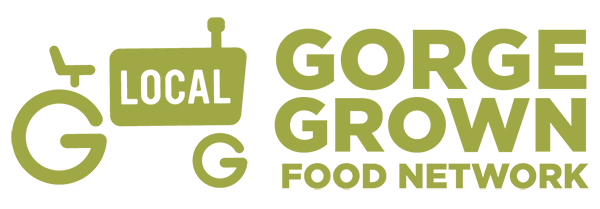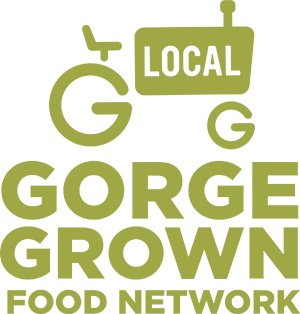18 Aug – The True Cost of Food
Every time we buy food or eat we have to make a choice: local or not. What keeps you from buying more local food? We’ve been traveling around the Gorge asking residents this question. The most common answer? Cost.
We need to consider the true costs of cheap, imported food. Here are a few of the facts:
- The average fruit or veggie you buy from outside the gorge travels 1,500 miles over 7 days to reach the store.
- Produce starts to lose nutrients as soon as it is harvested: Research has shown that most produce loses 30 percent of nutrition 3 days after harvest. Spinach, for example, loses 90 percent of its vitamin C within 24 hours of harvest.
- Imported, industrial food requires 8 calories of energy to produce 1 calorie of food. Some of those unseen costs include fuel for trucks and farm machinery, petroleum based fertilizers and pesticides, refrigeration and
And if you look carefully not all local food at the grocery store or farmers market is more expensive then imported food.
Let’s look at one example: eggs. I can drive to the local grocery and purchase one
dozen conventional eggs for around $3.00 from 1,800 miles away. Those eggs were produced industrially from chickens in cages who may never have seen the light of day. They were fed genetically engineered feed. Their beaks were clipped, and the yolks are pale yellow. The people working at the farm may not have been paid fairly or treated well.
I could also purchase local, organic, humanely produced eggs from the farmers market for $6.00/dozen. Those eggs have significantly higher nutrients, antioxidants, Vitamins A & E, one-third less cholesterol then the conventional eggs and one-forth less saturated fat. Those chickens roamed nearby fields and ate fresh greens, bugs and organic feed with supplemental nutrients like flax seed. The yolks of those eggs are sunset orange and I know that my money will go directly to my farmer friend. Sure, I have to cut back on other things to spend more on local, organic eggs but knowing I am investing in my health while bolstering our local farms and economy is invaluable to me.
According to the latest USDA census, Americans spend only 6.7 percent of household consumer expenditures on food. The French and Japanese spend double that, while citizens of Guatamala and the Philippines spend an average of 40 percent of expenditures on food. (You can check out that data here.)
Out of ten egg producers surveyed in the Gorge, only two of those farmers actually make a wage they can live on. The rest of them have other jobs to get by, or a partner who works off the farm. If 20% of the fruit, veggies and meat we eat in the Gorge were purchased directly from a local farmers, we’d keep $9.6 million extra in the Gorge each year.
About 30% of Gorge residents actually cannot afford enough food, let alone the extra cost of local, organic eggs. Gorge Grown Food Network aims to address food insecurity by providing better access to quality food through the food stamp (SNAP) match program, mobile markets and the new Veggie Rx program.
If you do have the ability to purchase or source more local food, please consider investing in your health and our local economy. Together we can grow and enjoy the local food movement.
———————–
Resources:
- Watch this video by Sierra Club on the true cost of food
- Check out Oregon State University’s Food Hero website featuring tips buying local on a budget, meal planning, saving time in the kitchen and preserving food: https://www.foodhero.org/tips/helpful-tips


